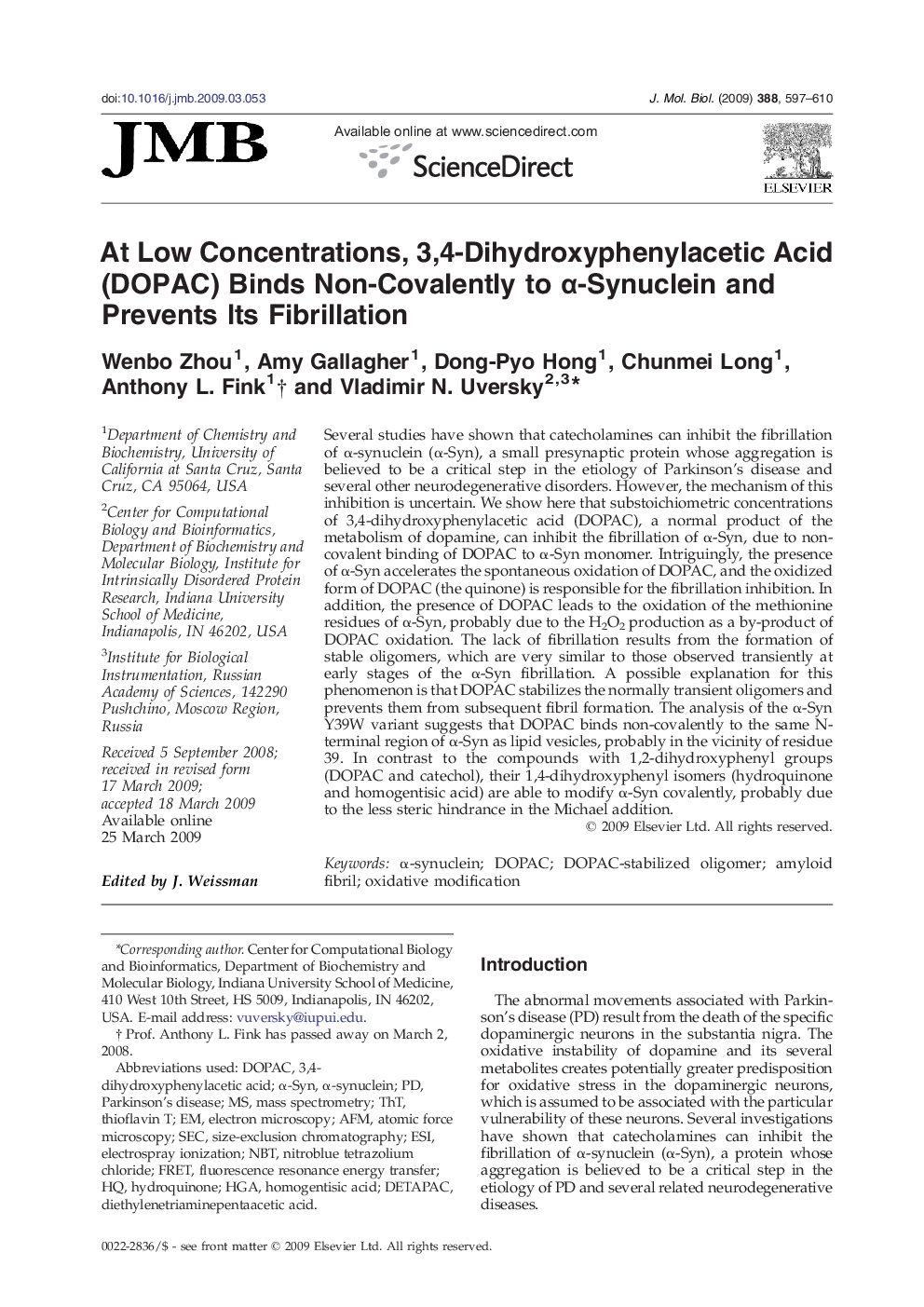| کد مقاله | کد نشریه | سال انتشار | مقاله انگلیسی | نسخه تمام متن |
|---|---|---|---|---|
| 2186681 | 1096071 | 2009 | 14 صفحه PDF | دانلود رایگان |

Several studies have shown that catecholamines can inhibit the fibrillation of α-synuclein (α-Syn), a small presynaptic protein whose aggregation is believed to be a critical step in the etiology of Parkinson's disease and several other neurodegenerative disorders. However, the mechanism of this inhibition is uncertain. We show here that substoichiometric concentrations of 3,4-dihydroxyphenylacetic acid (DOPAC), a normal product of the metabolism of dopamine, can inhibit the fibrillation of α-Syn, due to non-covalent binding of DOPAC to α-Syn monomer. Intriguingly, the presence of α-Syn accelerates the spontaneous oxidation of DOPAC, and the oxidized form of DOPAC (the quinone) is responsible for the fibrillation inhibition. In addition, the presence of DOPAC leads to the oxidation of the methionine residues of α-Syn, probably due to the H2O2 production as a by-product of DOPAC oxidation. The lack of fibrillation results from the formation of stable oligomers, which are very similar to those observed transiently at early stages of the α-Syn fibrillation. A possible explanation for this phenomenon is that DOPAC stabilizes the normally transient oligomers and prevents them from subsequent fibril formation. The analysis of the α-Syn Y39W variant suggests that DOPAC binds non-covalently to the same N-terminal region of α-Syn as lipid vesicles, probably in the vicinity of residue 39. In contrast to the compounds with 1,2-dihydroxyphenyl groups (DOPAC and catechol), their 1,4-dihydroxyphenyl isomers (hydroquinone and homogentisic acid) are able to modify α-Syn covalently, probably due to the less steric hindrance in the Michael addition.
Journal: Journal of Molecular Biology - Volume 388, Issue 3, 8 May 2009, Pages 597–610